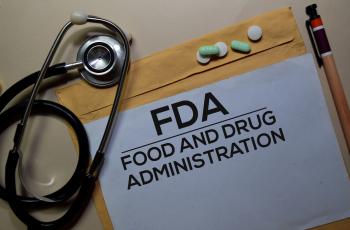PEAC: Transforming Patient Engagement from a Buzzword to Actionable Potential
FDA CDRH assembled an expert committee of patients and patient advocates who gathered for a public advisory committee meeting on October 11-12, 2017 in Gaithersburg, MD. This gathering marked the most significant public effort from the FDA to deliver on their stated commitment to put patients – across diseases – first, attempting to identify and break down the tremendous barriers that have long prevented and infinite opportunities that exist from true patient engagement.
“Patients are at the heart of all we do,” according to Dr. Owen Faris and Kathryn O’Callaghan, leaders of the FDA’s Center for Device and Radiological Health (CDRH). As patients and patient advocates, we have heard this phrase repeated countless times, particularly by representatives from both regulatory bodies and industry. We have found comfort in this declaration, but, as we learned during the inaugural meeting of the Patient Engagement Advisory Committee, many patient populations have not been afforded the same sense of promise and trust in this statement as we have.
CDRH is undergoing substantial structural change to systematize patient engagement within their department – noting that, by the end of 2017, 100% of their employees will be expected to engage with patients in some form, which correlates with their transition to evaluating medical devices within their total product lifecycle.
Key highlights from the meeting emerged as a result of a novel framework for attendee, committee, and FDA interaction, notably including:
- Opening remarks from FDA Commissioner Dr. Scott Gottlieb, Director of CDRH, Dr. Jeffrey Shuren, who was present in the front row during the entire two-day meeting, and CDRH Clinical Trials Program Director Dr. Owen Faris who outlined the systematic changes within CDRH to engage with patients;
- A series of roundtable discussions among patients, patient advocate groups, manufacturers (such as AstraZeneca, Johnson & Johnson, Sanofi, and Boston Scientific), market researchers, and other attendees with members of the FDA who listened intently, facilitated discussion with probing questions, and reported comprehensive summaries of each groups’ concerns, questions, and ideas;
- The topics for discussion included:
- Patient Involvement in the Design of Clinical Trials
- Patient Recruitment, Enrollment, and Retention
- Dissemination of Trial Data and Results to Participants and Other Patients
- The topics for discussion included:
- A moving Public Open Session during which 16 speakers (including patients, caregivers, industry representatives, and patient advocates) shared poignant testimony about frustrations with the FDA medical device process and the impact of being a medically-harmed patient, as well as appreciation for recent advancements in incorporating patient voices and perspectives;
- Presentations from various stakeholders conveying their own successes, failures, and lessons in engaging patients in the clinical trial process (this is a very important area since it is such a challenge across many areas) including:
- Presentations on patient engagement efforts with the clinical trial enterprise by representatives from Duke Clinical Research Institute and the Center for Information & Study of Clinical Research Participation (CISCRP);
- Presentations on patient involvement in the design of clinical trials by representatives from AstraZeneca, the National Cancer Institute, and Scripps Translational Science Institute;
- Presentations on patient recruitment, enrollment, and retention by representatives from Clinical Program Operations at Johnson & Johnson, Boston Scientific, Patient-Centered Outcomes Research Institute (PCORI), and the National Organization for Rare Diseases (NORD); and
- Presentations on the communication of study results to trial participants by representatives from ClinicalTrials.gov and Sage Bionetworks.
- Open committee discussion in response to FDA questions that conveyed the depth of dedication and responsibility each member felt in creating substantial change in the current process.
The meeting culminated with committee discussion responding to FDA questions, with the purpose to summarize the themes from the two-day meeting and provide initial conclusions from and action steps for the Committee.
With universal consensus, the Committee noted that it should lead efforts to develop a framework with the FDA and industry to detail how to engage patients during the design of clinical trials in order to demystify the clinical trial process. All members agreed that the framework should identify how to address the barriers patients face in engaging with clinical trials (e.g., socioeconomic status, cultural variables, literacy). The overarching theme in discussing designing clinical trials was to involve patients early and often. We'd love to see more patient investment in the following ways:
- Patients should be invited early and taught how to prepare.
- Patients should receive compensation not only in terms of travel expenses but in terms of their time - many are leaving jobs and won't be paid.
- Manufacturers should be informed and taught the value of patient involvement so there is alignment and it's not a "check the box" exercise.
In order to address the issue of enrollment and retention in clinical trials, the Committee highlighted the importance of the iterative process of educating the patient prior to, during, and after the trial, particularly by using simple language, illustrations, and video explanations in patient materials (e.g., informed consent). To ensure the trial population better matches the real-world patient population, the Committee emphasized the need to conduct informed outreach to underserved communities with proper cultural and social knowledge of the added barriers to participation. Finally, the Committee illuminated PCORI as a resource for engaging patients, due to their existing work on increasing trial diversity and involving patients in trial design.
In addition to trial execution specifics, the Committee discussed the importance of communicating clinical trial results to both the participants and the general patient population, which should be detailed in the trial development process. The Committee, as well as other attendees, called upon the patient advocate committee to be trusted sources that translate results, developments, and related implications for the wider patient community.
See the official FDA summary here.
From diabetes, Bennet Dunlap – a member of the 12-person committee – expressed optimism about the possibilities for the group. As he mentioned, the FDA, and the CDRH side, in particular, has made a concerted effort to engage with the diabetes patient community. We applaud the FDA’s efforts to understand the experience and risks of living with diabetes over the last decade! Highlights of these efforts that we've written about in diaTribe over the years are summarized below:
- FDA/NIH Public Workshop - Innovations in Technology for the Treatment of Diabetes: Clinical Development of the Artificial Pancreas (an Autonomous System) – November 10, 2010
- Workshop on Innovation Towards an Artificial Pancreas – April 9-10, 2013
- Diabetes Live Chat – March 31, 2014
- FDA-Patient Dialogue on Unmet Needs in Diabetes – November 3, 2014
- FDA Public Workshop: Regulatory Science Considerations for Software Used in Diabetes Management – November 13, 2014
- Diabetes Mine Innovation Summit: Delivering on the Promise of Diabetes Technology – November 15, 2013
- FDA Live Webinar – Artificial Pancreas: A Dialogue between the FDA and the Diabetes Community – June 2, 2016
- Fourth NIH AP Workshop – Testing and Adoption of Current and Emerging Technologies – July 6-7, 2016
- Diabetes Outcome Measures Beyond Hemoglobin A1c (HbA1c) – August 29, 2016
- Glycemic Outcomes Beyond A1C: Standardization and Implementation – July 21, 2017
- Reducing the Risk of Preventable Adverse Drug Events Associated with Hypoglycemia in the Older Population – September 12, 2017
- FDA Artificial Pancreas Guidance – the FDA changed the draft of AP Guidance to incorporate feedback from JDRF and make the pathway far more patient-friendly – 2011-2012
- FDA Blood Glucose Meter Accuracy Guidance – after receiving hundreds of comments from patients and industry the FDA changed the draft of BGM Accuracy guidance – 2014-2016
The Chair of PEAC, Paul T. Conway (American Association of Kidney Patients, Patient Advocacy), responded to the speakers of the public open session with an emotional comment about his own experience and pointedly concluded: “The passion, the personal interest, which is important, and your concern about who comes after you are not missed by this committee, even as we are coming from all walks of life. We’re here to make a difference.”


